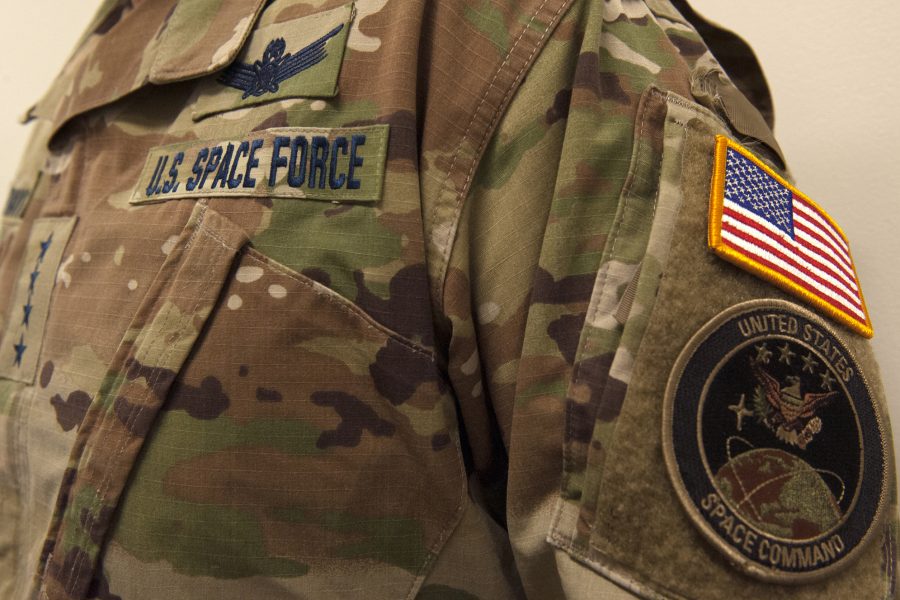Space Force troops will try out new rank insignia for the first time next month, as the service looks to shake up the traditional chevron design it inherited from the Air Force.
“We’re excited about that, to get feedback and figure out what that insignia looks like, and new uniforms and all those things coming up later in the year,” Chief Master Sergeant of the Space Force Roger A. Towberman said Feb. 25 during AFA’s virtual Aerospace Warfare Symposium.
The new insignia will accompany the Space Force’s fresh take on a rank and grade structure that took effect at the beginning of February. While officials know some people are disappointed in the decision not to throw the existing ranks out the window entirely, they said what Guardians do matters more than what they’re called.
“We were very deliberate to say, ‘Hey, we’re not going to call them first, second, third class. We’re going to treat them more as as one group, where the levels within that group are mostly in the control of the specialists,’” Chief Master Sergeant of the Space Force Roger A. Towberman said.
The Space Force landed on Specialist 1, 2, 3, and 4 for its first four enlisted ranks, followed by sergeant, technical sergeant, master sergeant, senior master sergeant, chief master sergeant, and chief master sergeant of the Space Force. Leaders hope that ladder adds meaning to a Guardian’s career path as they improve over the years.
Towberman indicated that adopting Specialist 1 through 4 as the lowest ranks helps reinforce the service’s model of leveling up as Guardians learn new skills. As troops reach the noncommissioned officer ranks, he argues it also sends a message to start out with sergeants.
“We really wanted to put the strong servant rank of sergeant right there to say, at the first level of supervision, there’s nothing more important than serving your team and their family and loved ones,” Towberman said.
He suggested that the service could later split its technical sergeants into tiers based on their level of interest in a particular line of work. Those conversations are still in the works.
“We’ve left the door open,” he said. “If I want to spend my life on an ops floor … and I’m really, really good at it and I want to stay really good at it, and I don’t want to do some other things, but I want to stick around and I want to be invested in more, then maybe we go Technical Sergeant 1, 2, and we step up from there.”
When the new ranks were first revealed, many on social media criticized the Space Force for lacking more creativity. But just because the public wants different changes doesn’t mean it makes sense for the force, Vice Chief of Space Operations Gen. David D. Thompson said.
“There were a lot of people with opinions and ideas and things they thought were important about ranks,” he said. “The idea that there was going to be some deep and significant cultural impact to the Space Force … was way over-emphasized and, frankly, not particularly supported in analysis.”
People connect first with their service, then to their mission area, he said. They tell others they spent their career as an Airman or an intelligence officer, not as a captain. Assigning Guardians a completely different slate of ranks—such as one influenced by iconic pop culture like “Star Trek,” as some wanted—wouldn’t change that, Thompson said.
“We made changes that were important, that we need to make, and now it’s important for us to build the culture based on our service, based on our mission capabilities,” he said.
